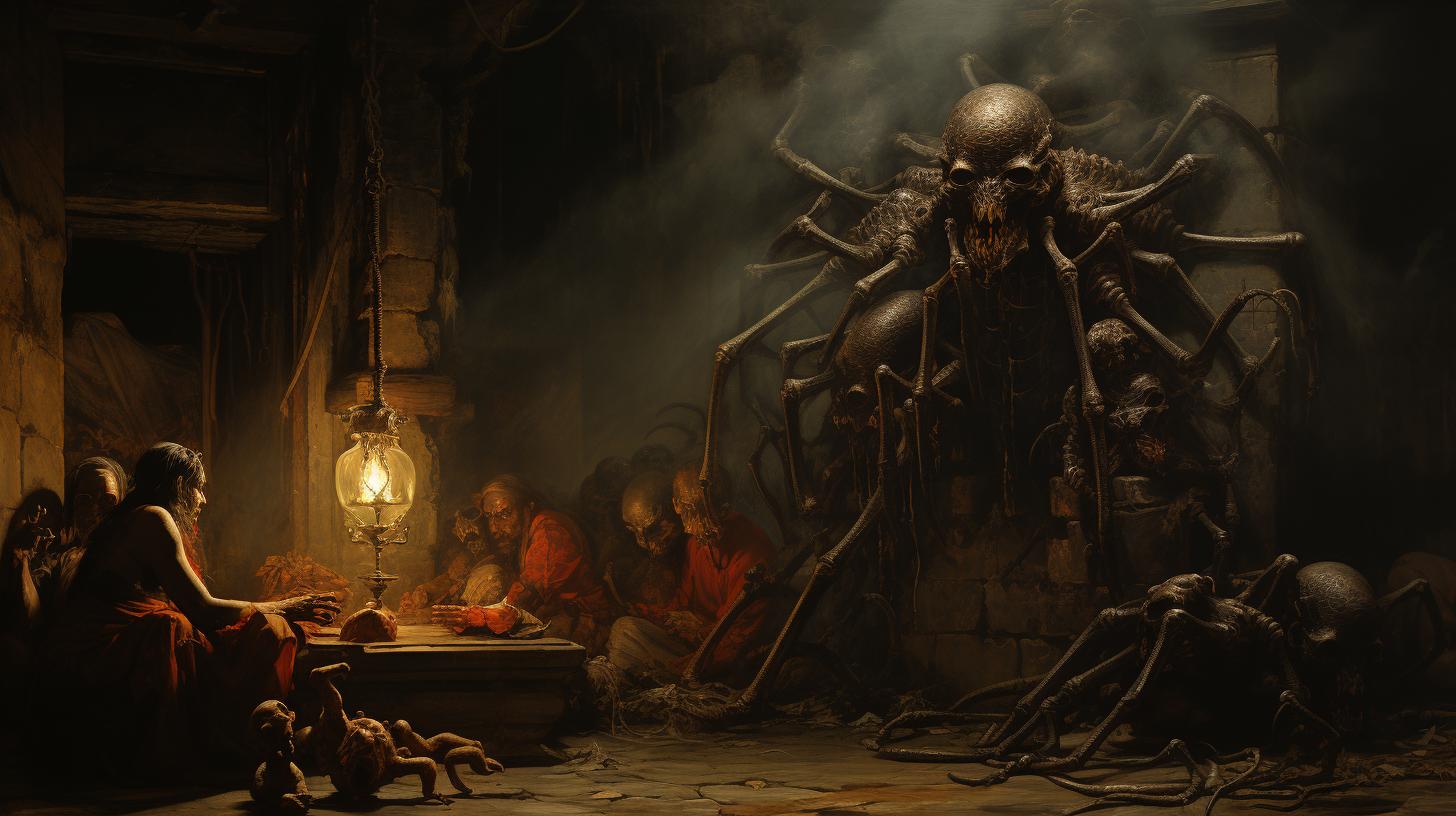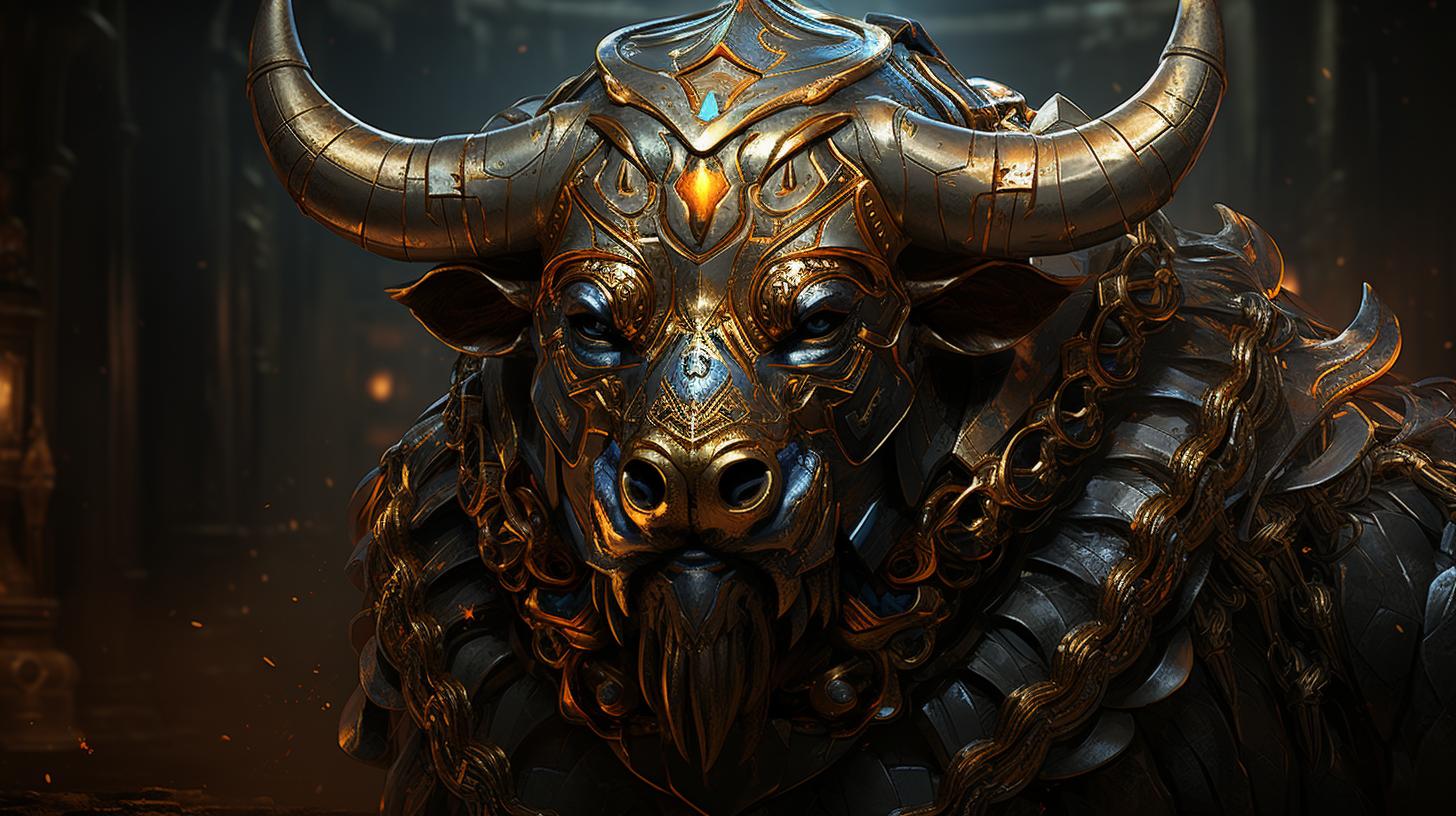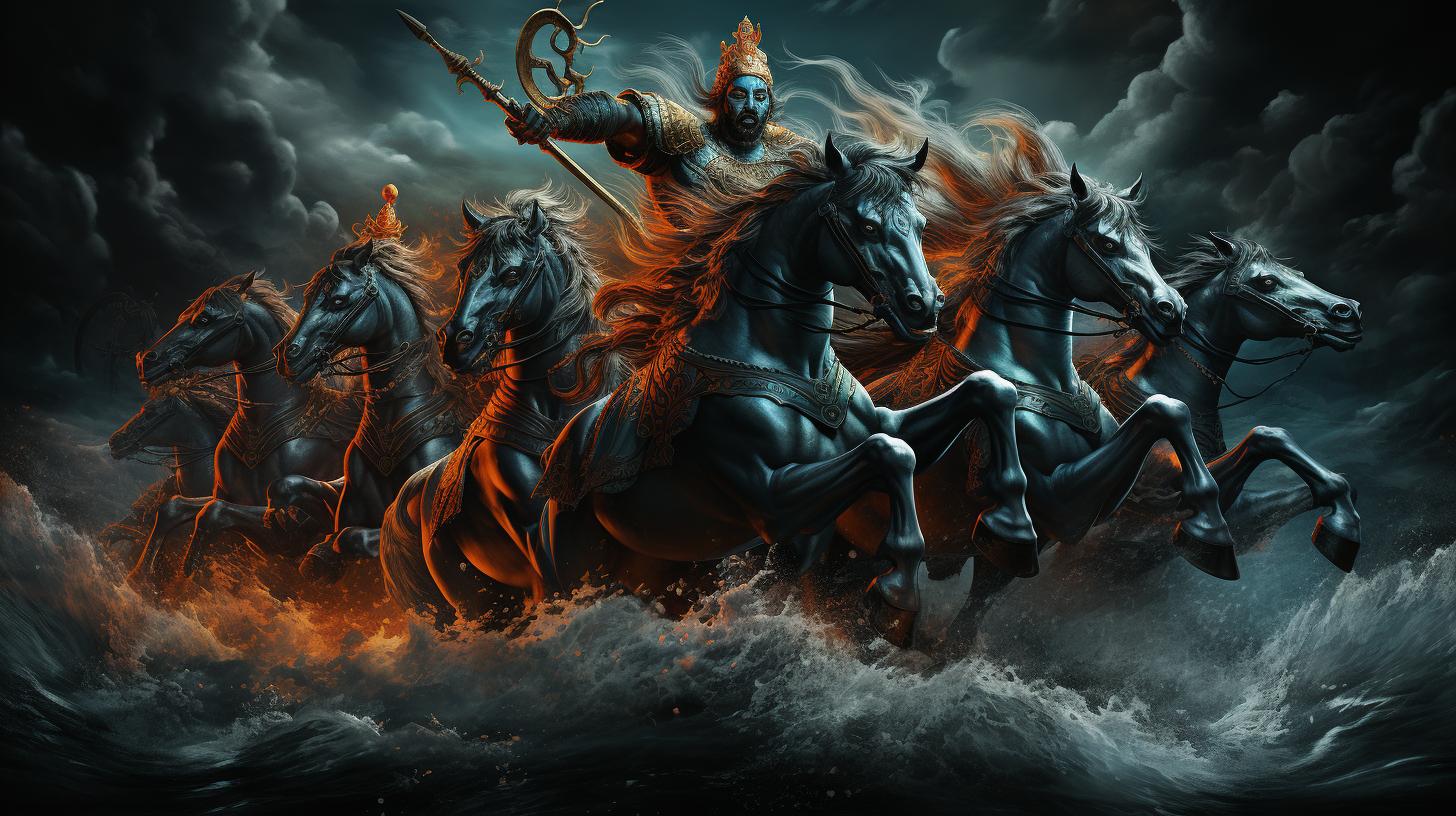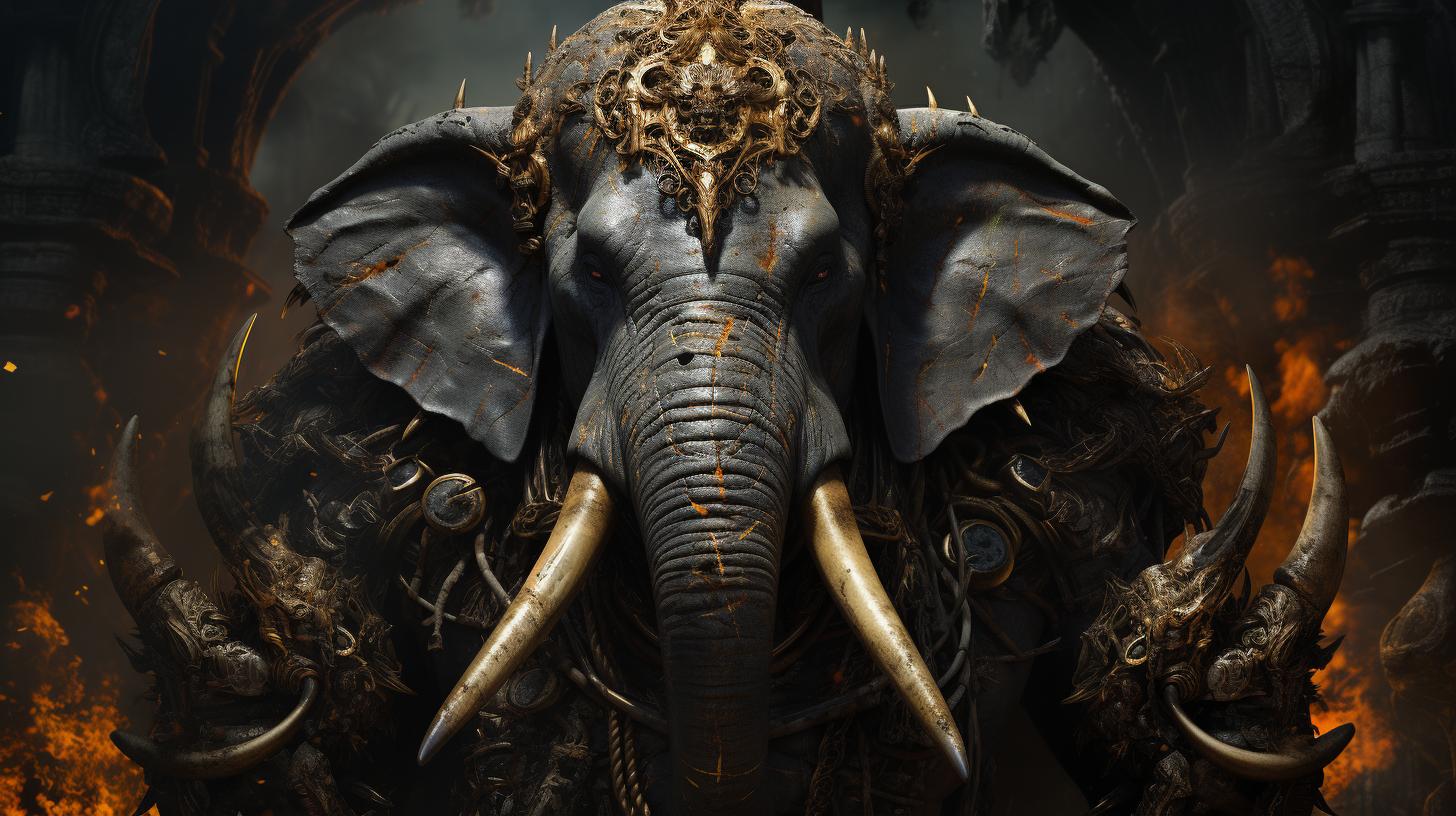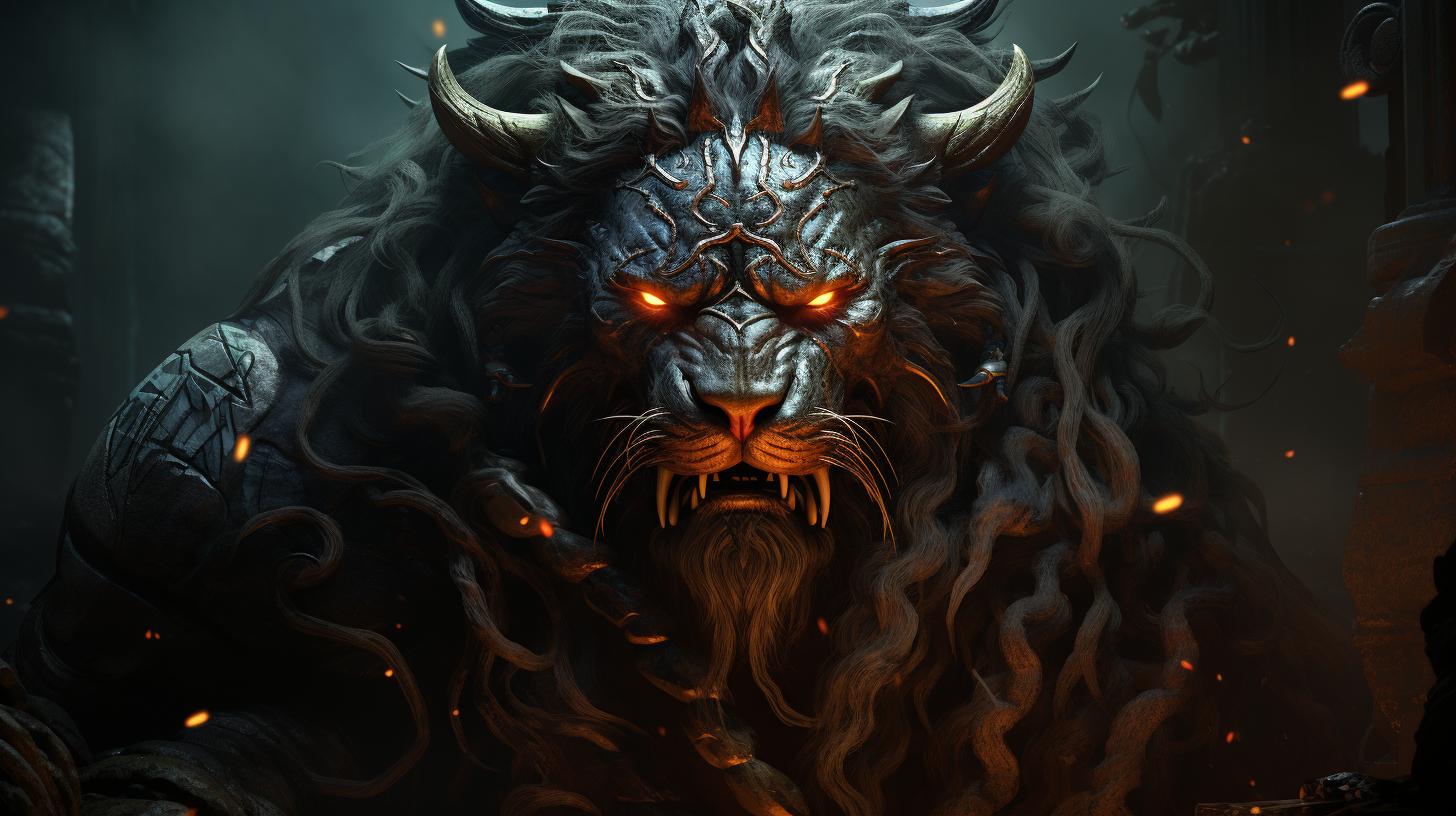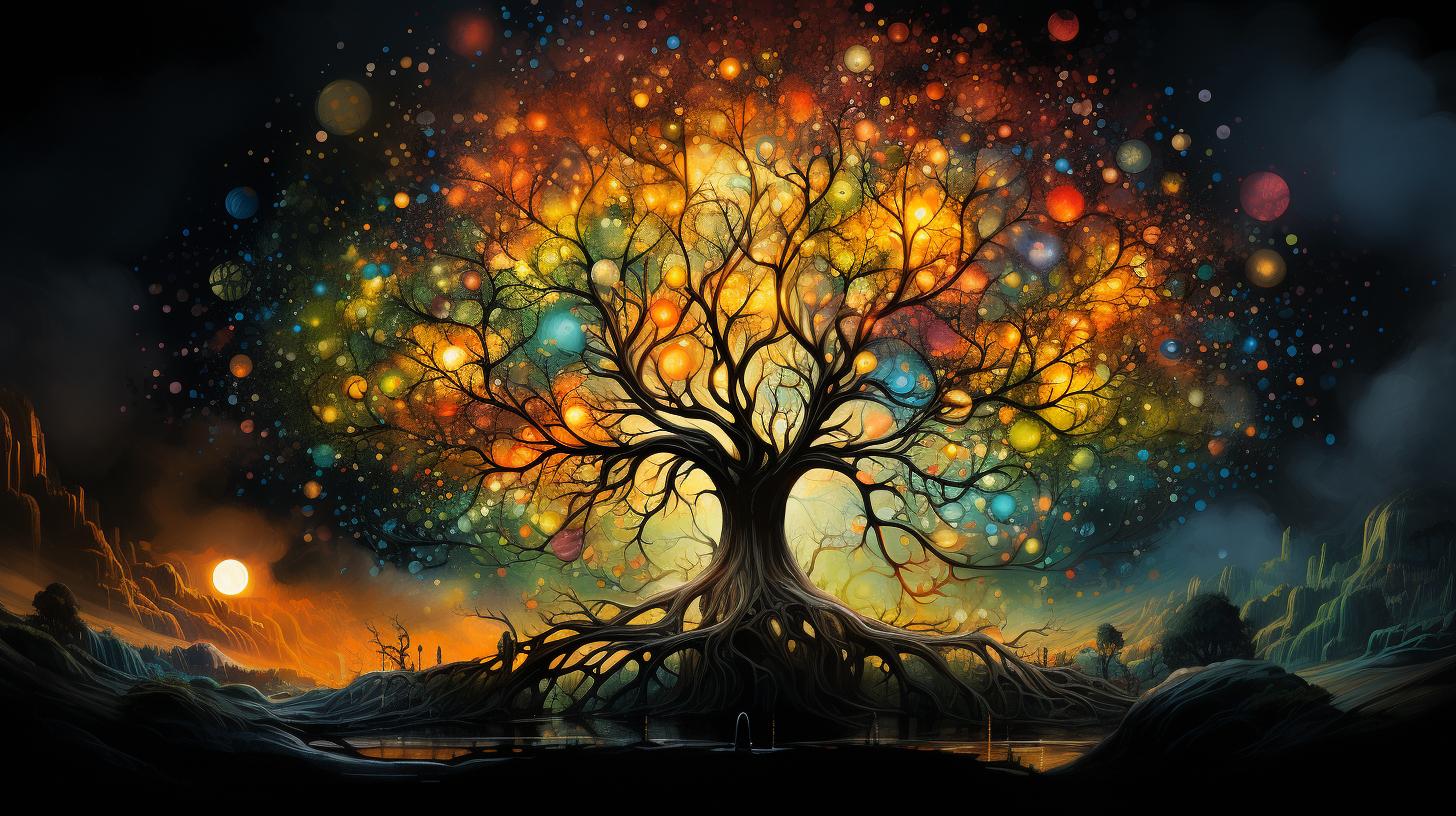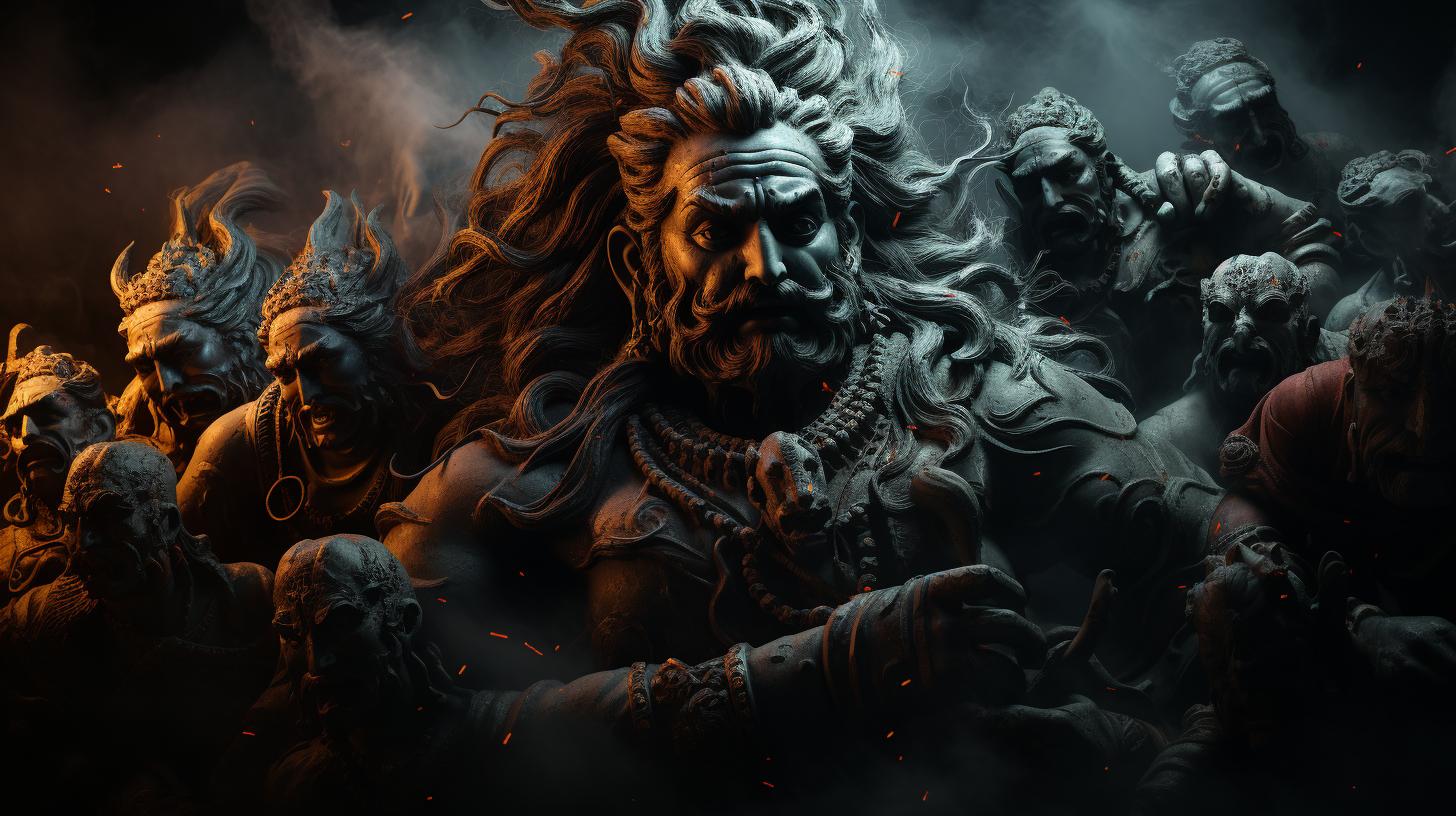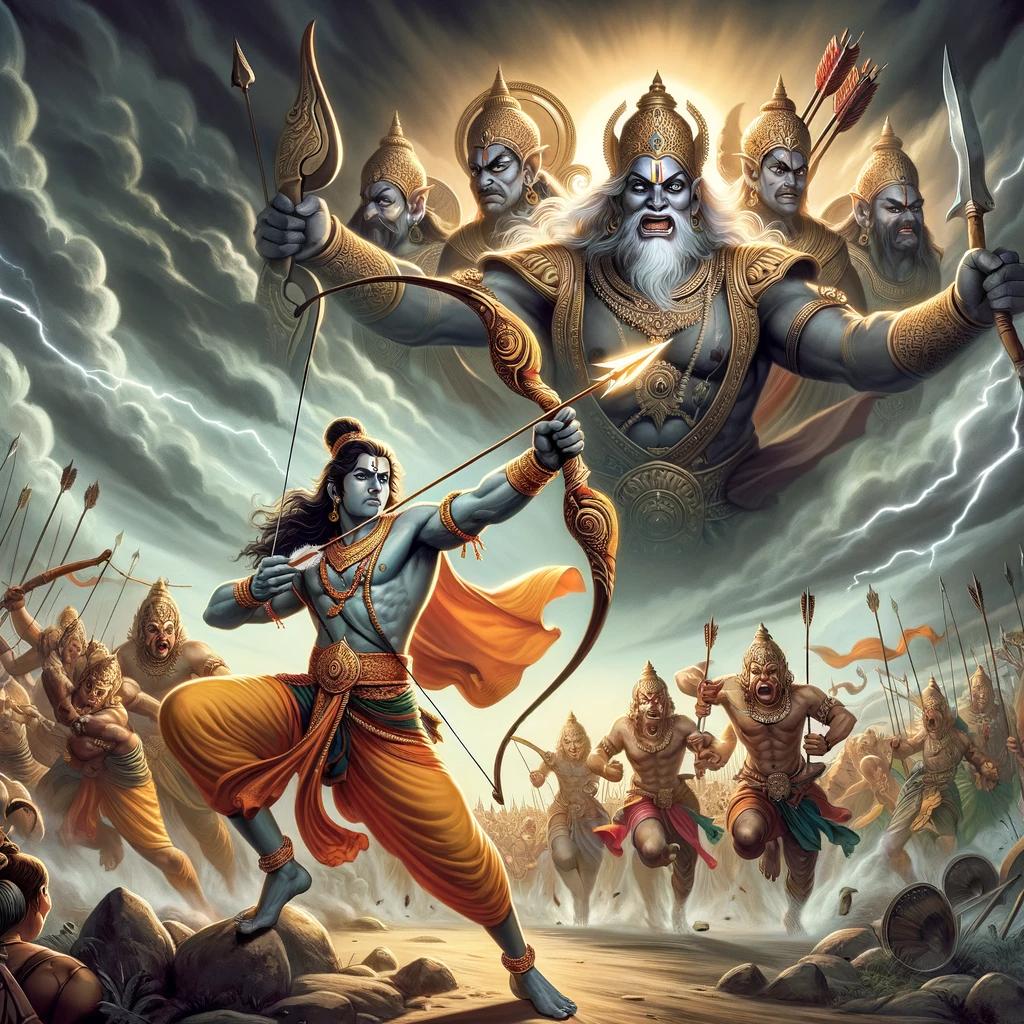Pishacha Demon: Unleashing Terror and Uncovering Cultural Identity
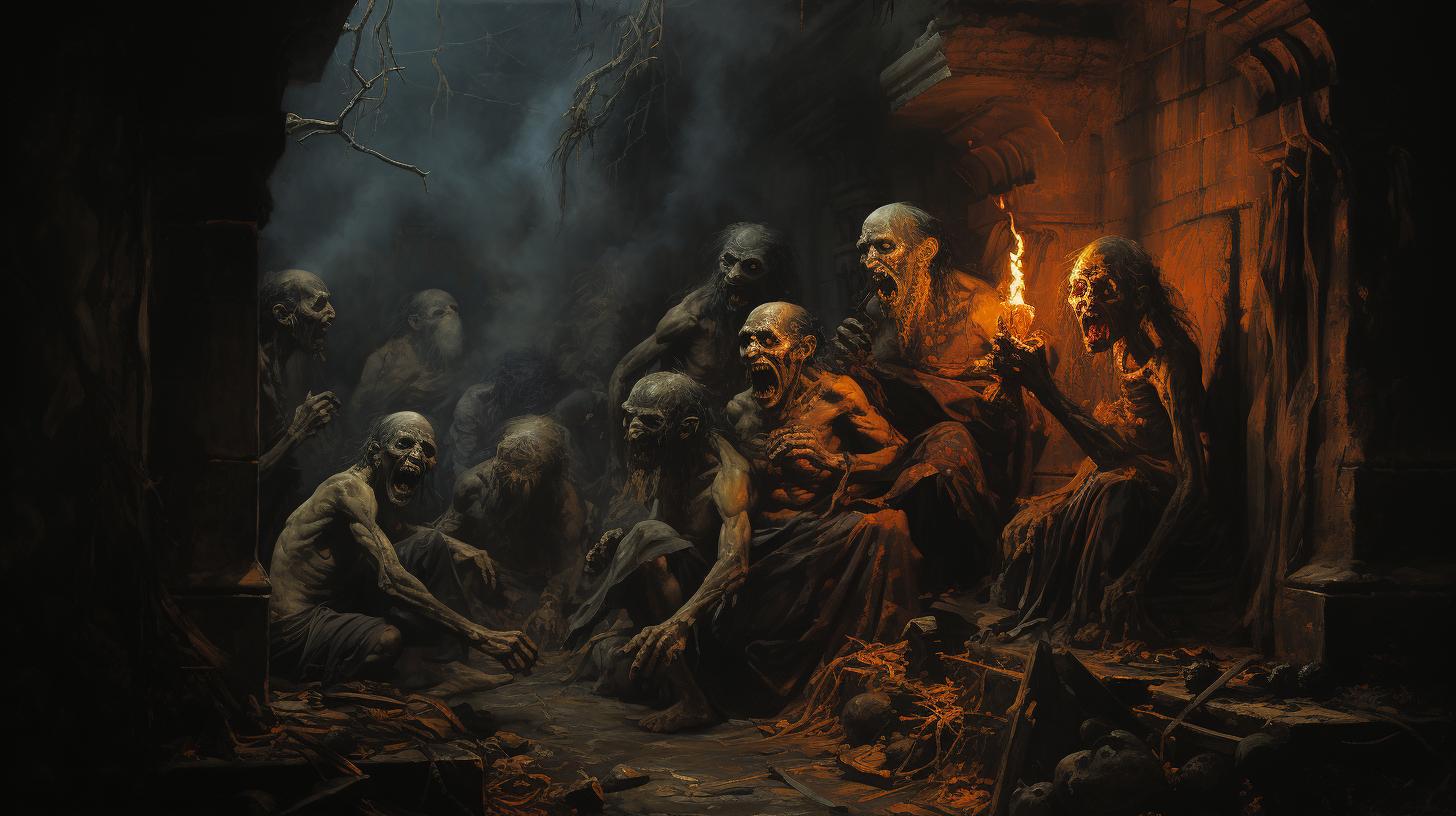
The Pishacha demon, rooted in Hindu and Buddhist mythologies, is a terrifying creature that has captivated cultural imaginations for centuries. This article provides an overview of the origins, significance, and depictions of the Pishacha demons, exploring their role in popular culture, horror films, and even television series.
We delve into their connections to cremation grounds, their ability to possess humans, and the unique language associated with them. Additionally, we examine the cultural interpretations of the Pishacha in the United States, particularly among Indian-American teens.
Let’s unravel the mysteries behind the Pishacha demon.
The Origins of Pishacha Demon
The Pishacha demon has its roots deeply embedded in the ancient mythologies of Hinduism and Buddhism. These demonic entities are believed to have been created by the deities Brahma, Krodha, or Daksha, and are considered a separate race from humans.
Pishachas have been portrayed as flesh-eating demons who are drawn to darkness and often haunt cremation grounds alongside other malevolent beings. They possess the ability to assume different forms at will and even become invisible, making them elusive and terrifying.
According to legends, Pishachas are associated with femininity and have been blamed for causing various illnesses. However, they are also believed to possess the power to heal those afflicted by them, and as a result, offerings are made to them during religious rituals and festivities.
Physically, Pishachas are depicted as beings with dark complexion, prominent veins, and bulging red eyes. These distinct features add to their eerie and formidable presence.
Exploring the origins of the Pishacha demon provides us with valuable insights into the rich mythological tapestry of Hindu and Buddhist cultures.
It allows us to delve deeper into their significance and the influence they exert within these belief systems.
Pishacha in Hindu and Buddhist Mythologies
The Pishacha demon is deeply rooted in the rich mythologies of both Hinduism and Buddhism. In Hindu mythology, Pishachas are demonic entities associated with darkness and are often found lurking in cremation grounds alongside other malevolent spirits.
These creatures possess the ability to shape-shift at will and can even become invisible, making their presence all the more unsettling.
Pishachas are believed to be a separate race from humanity, created by deities such as Brahma, Krodha, or Daksha.
Although they are considered demonic entities, Pishachas can also possess and control human beings, further emphasizing their formidable power.
In Buddhist mythology, Pishachas are depicted as flesh-eating demons. They are known for their dark complexion, bulging veins, and striking red eyes, which symbolize their intimidating nature.
While they are often associated with femininity and are sometimes blamed for causing diseases, Pishachas possess the potential to heal those affected by their afflictions.
Interestingly, Pishachas have their own language called Paishachi, highlighting their unique attributes within these ancient mythologies.
In religious functions and festivals, offerings are made to appease these entities, recognizing their role in the spiritual realm.
In conclusion, the Pishacha demon holds a significant place in Hindu and Buddhist mythologies, representing darkness, fear, and the struggle between good and evil.
Their association with cremation grounds, ability to possess humans, and unique characteristics make them intriguing and complex entities within these religious traditions.
The Mythological Significance of Pishacha
The Pishacha holds a significant place in Hindu and Buddhist mythologies, representing a unique class of demons. These malevolent creatures are known for their insatiable appetite for flesh and their association with darkness and cremation grounds.
Within the mythologies, the Pishachas are believed to be a distinct race, separate from humans, with their own language known as Paishachi.
In Hindu mythology, the Pishachas are often associated with femininity and have been blamed for causing various diseases.
However, they are also seen as having the power to heal those affected by their influence and are sometimes offered offerings during religious ceremonies and festivals.
According to the legends, the Pishachas possess the ability to assume different forms at will, making themselves invisible and difficult to detect.
They are said to be created by deities like Brahma, Krodha, or Daksha, adding to their enigmatic nature.
The Pishachas’ portrayal in popular culture, particularly in horror films, often amplifies their terrifying persona as flesh-eating monsters.
However, it is crucial to recognize that these cultural interpretations may simplify the complex mythological background surrounding them.
Pishacha Demon in Popular Culture
The Pishacha demon has made its way into popular culture through various forms of media, particularly in the realm of horror. In movies, television shows, and literature, the Pishacha demon is often portrayed as a malevolent and terrifying entity, bringing fear and chaos wherever it appears.
One notable example of its portrayal in popular culture is the horror film “It Lives Inside,” which features a character named Tamira who keeps the Pishacha demon trapped in a jar.
This creature, known for its insatiable appetite for human flesh, becomes the source of terror and destruction in the movie.
Additionally, the Pishacha demon has gained recognition in horror literature, where it is depicted as a formidable antagonist that possesses supernatural powers and a chilling presence.
Its ability to shapeshift and become invisible adds to its mystique and makes it a truly formidable force.
Moreover, the Pishacha demon has become a popular subject in urban legends, ghost stories, and folklore, further solidifying its status as a prominent figure in popular culture.
These narratives often emphasize the demon’s carnal desires and its association with darkness and death.
Overall, the Pishacha demon’s presence in popular culture has created an enduring fascination with its terrifying nature and its role as a creature that brings about fear and destruction.
Its depiction in various forms of media continues to captivate audiences and adds to the rich tapestry of supernatural lore.
Pishacha in Horror Films: A Deep Dive
The presence of the Pishacha demon in horror films has captivated audiences and brought an element of terror to the screen. These films delve into the ancient mythology of the Pishacha and reinterpret it in a modern, chilling context.
Through atmospheric settings, suspenseful storytelling, and visceral effects, filmmakers have successfully portrayed the malevolent nature of the Pishacha.
In these horror films, the Pishacha is often depicted as a flesh-eating creature that preys on its victims, both physically and spiritually.
Its ability to assume different forms and its association with darkness create a sense of dread and unease. Audiences are kept on the edge of their seats as they witness the Pishacha’s relentless pursuit of its prey, resulting in terrifying and gruesome encounters.
These films also explore the psychological impact of the Pishacha, highlighting how its presence can consume and corrupt individuals. The demon’s influence can drive characters to commit heinous acts or battle internal demons.
This psychological aspect adds depth to the horror genre, pushing boundaries and instilling a lingering sense of fear long after the film concludes.
By examining the Pishacha within the realm of horror films, filmmakers have uncovered new dimensions of this ancient demon, reimagining it to provoke fear and unease in audiences.
These cinematic portrayals continue to perpetuate the legend of the Pishacha while introducing it to new audiences, reminding us of the enduring power of this terrifying mythological entity.
Exploring the Pishacha Legends in ‘Pishachini Serial’
The Pishachini Serial has captivated audiences with its intriguing portrayal of the Pishacha legends.
This hit television series delves deep into the mythology surrounding these supernatural creatures. Through compelling storytelling and stunning visuals, ‘Pishachini’ takes viewers on a thrilling journey into the dark realm of the pishacha.
With each episode, the show uncovers the hidden secrets and powers possessed by these fearsome demons. From their ability to shape-shift into various forms to their invisibility, ‘Pishachini Serial’ brings to life the mystique and danger associated with the pishacha.
The series explores their connections to Indian folklore and the impact they have on human lives.
Through its engaging narrative, ‘Pishachini Serial’ sheds light on the cultural beliefs and practices surrounding the pishacha. Viewers have the opportunity to witness the fear and fascination these demons evoke, as well as the rituals performed to ward off their malevolent influence.
This exploration of pishacha legends in the popular serial provides a captivating glimpse into the supernatural realm that continues to captivate audiences.
Unveiling the Meaning of Pishacha
The term ‘Pishacha’ holds deep significance in Hindu and Buddhist mythologies. In its essence, the word represents a class of demons known for their insidious nature and flesh-eating tendencies. Although often portrayed in popular culture as fearsome creatures, the true meaning behind ‘Pishacha’ goes beyond the surface-level depictions.
Translated from ancient texts, ‘Pishacha’ refers to restless spirits that inhabit cremation grounds and lurk in the shadows. These beings embody darkness and are believed to have the power to possess and control humans.
However, the concept of ‘Pishacha’ is not limited to evil alone.
Within religious functions and festivals, offerings are made to appease and possibly heal the afflictions caused by the influence of ‘Pishacha’.
This dual nature of malevolence and potential for healing introduces a complex cultural interpretation of these demons.
Furthermore, ‘Pishacha’ plays a role in the creations of Brahma, Krodha, or Daksha, marking them as a distinct race separate from humans.
They possess the ability to change forms at will, making them elusive and formidable adversaries.
Through uncovering the meaning of ‘Pishacha’, we delve into the rich mythological tapestry that surrounds these demons.
By understanding their cultural significance and dual nature, we can gain insights into the complexities of the human psyche and the delicate balance between good and evil.
Understanding the Pronunciation of Pishacha
When it comes to pronouncing “Pishacha,” it is essential to grasp the correct enunciation of this intriguing word.
In the United States, the pronunciation typically follows American English phonetics.
The word “Pishacha” is pronounced as “pee-sha-cha.” The emphasis is placed on the first syllable, with a short “ee” sound.
The “sha” part is like the sound in “shark,” and the final “cha” is pronounced like “chopped,” but with a short “a” sound.
Understanding the pronunciation can help you better engage in discussions about this demon and its cultural significance.
It allows you to communicate clearly and accurately discuss various aspects of the Pishacha, from its origins to its portrayal in popular culture.
The Role of Pishacha in Brahma’s Creation
According to Hindu mythology, the Pishacha demon plays a significant role in the creation process attributed to Brahma, the creator deity.
Pishacha demons are believed to be created by either Brahma, Krodha, or Daksha, depending on different interpretations.
These demons are considered to be a distinct race from humanity, with their own set of characteristics and abilities. In the creation narrative, it is believed that Pishachas serve as a counterbalance to the divine order, providing a contrast to the harmonious existence of gods and humans.
- Pishacha demons are often associated with the darker side of creation, representing chaos and disorder.
- They are believed to embody primal energy and instincts, challenging the established order and norms.
- It is said that Pishachas have the ability to influence and manipulate human beings, adding complexity to the relationship between gods, humans, and these demonic creatures.
Understanding the role of Pishacha in Brahma’s creation sheds light on the intricate dynamics within Hindu mythology.
As these demons are intertwined with the balance of power and forces in the universe, their presence highlights the eternal struggle between order and chaos, light and darkness.
Pishacha’s Influence in Hindu Mythology
Pishacha, a demonic entity featured in Hindu mythology, holds a significant role in various religious narratives.
Believed to be created by deities such as Brahma, Krodha, or Daksha, Pishachas are considered a distinct race separate from humans.
In Hindu mythology, Pishachas are associated with the darkness and are often found lurking around cremation grounds alongside other malevolent beings.
They possess the power to assume different forms at will, making themselves invisible if desired.
Although Pishachas are often blamed for causing illnesses and diseases, they possess an intriguing duality. While capable of inflicting harm, they are also believed to possess the ability to heal those affected by their influence.
As a result, offerings are made to Pishachas during religious functions and festivals.
Physically, Pishachas are depicted as dark-skinned beings with prominent veins and red, bulging eyes. Their presence in Hindu mythology highlights the complex nature of the spiritual realm, intertwining notions of fear and fascination.
Pishacha as Flesh-Eating Demons: Cultural Depictions
The cultural depictions of Pishacha demons offer intriguing insights into their terrifying nature. In Indian folklore, Pishachas are often portrayed as demonic entities with an insatiable appetite for human flesh. These malevolent creatures lurk in the shadows, taking pleasure in causing fear and distress.
Represented with dark complexions, bulging veins, and haunting red eyes, Pishachas embody the embodiment of evil. They are known for their shape-shifting abilities, enabling them to assume various forms and strike fear into the hearts of their victims.
While considered as creatures of darkness, Pishachas also carry symbolic significance. They embody the consequences of straying away from cultural roots and succumbing to greed and temptation. Their depiction reflects the idea of cultural preservation and the importance of remaining connected to one’s heritage.
In popular culture, Pishachas have become prominent figures in horror films, captivating audiences with their bone-chilling presence. Through their representation in cinema, Pishachas serve as cautionary symbols, reminding viewers of the perils that await those who lose touch with their cultural identity.
The cultural depictions of Pishacha demons provide a glimpse into the dark side of human existence and the consequences of cultural disconnection. As flesh-eating creatures with a penchant for chaos, Pishachas remind us to embrace our cultural heritage and stay true to our roots, lest we become consumed by the darkness they represent.
The Symbolism of Bulging Veins and Red Eyes
The Pishacha demon is often depicted with bulging veins and red eyes, which carry significant symbolism in Hindu and Buddhist cultures. The bulging veins represent the intense power and energy possessed by these demonic entities.
They symbolize the ferocity and passion that fuel their malevolent actions. In Indian mythology, the bulging veins serve as a visual manifestation of the Pishacha’s strength and ability to inflict harm.
Similarly, the red eyes of the Pishacha hold deep symbolism. Red, in many cultures, is associated with danger, anger, and evil. The red eyes signify the wild and unrestrained nature of these demons, reflecting their uncontrollable rage and malevolence.
They are often seen as the windows to their malicious intent, piercing through darkness and capable of striking fear into the hearts of those who encounter them.
The combination of bulging veins and red eyes serves to enhance the eerie and menacing appearance of the Pishacha demon.
It intensifies the sense of dread and terror associated with these supernatural beings, adding to their aura of malevolence and power. The symbolism of these physical features underscores the danger they pose and highlights their role as fearsome adversaries in mythological tales and horror depictions.
Pishacha’s Connection to Cremation Grounds
The Pishacha demon is intricately linked to cremation grounds in Hindu and Buddhist mythology. These sinister creatures are said to lurk in these sacred locations, alongside other malevolent entities. Cremation grounds are considered potent sources of dark energy, drawing in Pishachas due to their attraction to darkness.
According to ancient beliefs, Pishachas feed on the remains and energy of the deceased, adding an eerie presence to these areas. They are believed to embody the fears and anxieties associated with death and the fragility of life.
Cremation grounds serve as a feeding ground for these flesh-eating demons, who derive their sustenance from the rituals of death and the emotions associated with them.
It is within these macabre surroundings that Pishachas find solace and power.
They thrive in the shadows, ready to prey on unsuspecting individuals who venture into their realm. The association of Pishachas with cremation grounds reinforces their menacing presence and highlights their role as agents of chaos and disruption.
The connection between Pishachas and cremation grounds highlights the deeper symbolism associated with death, transformation, and the cycle of life. It underscores the intricate relationship between the physical and spiritual realms, inviting contemplation on the complex nature of existence.
- · Pishachas are drawn to cremation grounds due to their attraction to darkness and the energy of death.
- · These demonic creatures feed on the remains and energy of the deceased, adding an eerie presence to these sacred areas.
- · They embody fears and anxieties associated with death and prey on unsuspecting individuals who enter their realm.
- · The connection between Pishachas and cremation grounds highlights deeper symbolism related to the cycle of life and the fragility of existence.
Pishacha’s Power to Possess Human Beings
According to Hindu and Buddhist mythologies, the Pishacha demon possesses a unique ability to take control of human beings.
This power allows them to infiltrate the lives of individuals, influencing their thoughts, actions, and emotions for their malicious purposes. Pishachas are known for their adeptness at manipulating their victims, causing chaos and torment.
Legend has it that once a person falls under the possession of a Pishacha, they become mere vessels for the demon’s malevolence. The Pishacha can exert its control over the individual, leading them to engage in destructive behavior, spreading darkness wherever they go.
It is believed that once possessed, it becomes incredibly challenging for the victim to free themselves from the clutches of the Pishacha.
The possession by a Pishacha often manifests in unusual behavior and unexplained changes in personality.
The victim may experience intense feelings of fear, anger, or sadness, resulting in erratic actions that go against their true nature. This supernatural influence can have dire consequences for both the possessed individual and those around them.
- Pishachas exploit the vulnerability of the human mind, manipulating thoughts and emotions to further their evil agenda.
- Victims of possession often exhibit uncharacteristic behavior, driven by the dark influence of the Pishacha.
- Breaking free from a Pishacha’s control requires extraordinary measures, such as the intervention of spiritual leaders or rituals.
Understanding the power of possession by a Pishacha is crucial in recognizing the threat it poses.
Vigilance and seeking spiritual guidance can help safeguard against falling under the control of these formidable demonic beings.
The Unique Language of Pishacha: Paishachi
The Pishacha demon is associated with a unique language known as Paishachi. Paishachi is said to be the language spoken by the Pishachas themselves, and it holds a significant place in the myths and legends surrounding these creatures.
Paishachi is believed to be a cryptic language, often associated with darkness and the supernatural. It is said to have its own distinct grammar and vocabulary, offering a glimpse into the mysterious world of the Pishachas.
The language is characterized by its guttural sounds and peculiar intonation, making it distinct from other languages.
While the exact details and script of Paishachi remain mysterious, there have been attempts to decode the language.
Scholars and linguists have studied ancient texts and inscriptions to unravel the secrets of this enigmatic language. However, due to its association with demonic entities, Paishachi is considered esoteric and lesser-known among mainstream linguistic circles.
Paishachi holds a significant cultural and mythological value, as it adds another layer of mystique to the Pishacha demon. Aspects of the language, such as demonic chants and incantations, are often depicted in folklore and rituals to evoke or ward off these dark entities.
The study and understanding of Paishachi provide a deeper insight into the rich mythology surrounding the Pishacha demon and its place in Hindu and Buddhist traditions.
Pishacha’s Role in Functions and Festivals
The Pishacha demon holds a significant role in various functions and festivals within Hindu culture.
Despite its fearsome reputation, the Pishacha is believed to possess healing powers that can be invoked during these events.
During religious ceremonies and rituals, devotees offer prayers and perform rituals to appease the Pishacha.
The demon is often invoked for protection against evil spirits and to ensure the well-being of individuals and communities.
One such festival is the annual Pishacha Puja, where devotees gather to honor and seek blessings from the demon.
The puja involves elaborate rituals, including offerings of food, incense, and holy water, in order to gain favor with the Pishacha and ward off negative influences.
Another function in which the Pishacha’s role is highlighted is the exorcism ceremonies.
When individuals are believed to be possessed by malevolent spirits, priests perform specific rituals to invoke the Pishacha’s power and expel the unwanted entity.
These functions and festivals demonstrate the cultural significance of the Pishacha demon in Hindu traditions and highlight the belief in its mystical powers.
Despite its association with darkness and fear, the Pishacha remains an integral part of religious and social practices, offering both protection and healing to those who seek its blessings.
Healing Afflictions Caused by Pishacha
When it comes to the malevolent Pishacha demon, its terrifying presence can bring about afflictions and disturbances.
Its association with darkness and its ability to possess human beings can have detrimental effects on individuals. However, in Hindu mythology, there exist remedies and practices to counter the negative influence of the Pishacha.
One such method involves the recitation of sacred mantras and prayers, which are believed to have the power to ward off the evil caused by the demon. These mantras are often chanted during religious rituals and ceremonies, seeking divine intervention and protection against the Pishacha’s harmful influence.
Additionally, certain herbs and ritualistic offerings are used to appease the demon and restore harmony. These offerings are believed to help pacify the Pishacha and alleviate the afflictions it may have caused.
By performing these rituals and engaging in spiritual practices, individuals aim to heal themselves from the malevolent effects of the Pishacha.
Furthermore, spiritual leaders and practitioners provide guidance and support to those affected by the demon’s influence.
Through counseling and spiritual healing techniques, individuals can find solace and learn to overcome the distress caused by the Pishacha.
By understanding the rituals, mantras, and remedies associated with Pishacha healing practices, individuals can seek relief from the negative impacts of this demonic entity.
These healing methods serve as a means to restore balance, well-being, and inner peace.
The Cultural Interpretations of Pishacha in the United States
Within the multicultural landscape of the United States, the cultural interpretations of the Pishacha demon among Indian-Americans are intriguing. These interpretations navigate the delicate balance between embracing their Indian heritage and assimilating into American society.
For Indian-American teens, the Pishacha demon represents a palpable connection to their ancestral roots. It becomes a symbol of their unique cultural identity, a bridge that spans generations and continents.
In the United States, the Pishacha demon serves as a metaphor for the struggles faced by these individuals in navigating their dual cultural identities.
It reflects the challenges they encounter in finding acceptance and grappling with issues of assimilation versus cultural preservation.
Through their interpretation of the Pishacha, Indian-American teens explore the notion of embracing their heritage while carving out their own place in American society.
It becomes a tool for self-reflection, allowing them to contemplate the importance of their roots and the value of cultural traditions.
Furthermore, the Pishacha demon serves as a catalyst for intergenerational dialogue within Indian-American families.
It sparks discussions about the significance of cultural traditions, the preservation of language, and the importance of passing down cultural knowledge to future generations.
By delving into the cultural interpretations of the Pishacha in the United States, we gain insights into the complex experiences of Indian-Americans and their ongoing journey to reconcile their cultural heritage with their American identity.
The Impact of Pishacha on Indian-American Teens
Indian-American teens are not immune to the powerful impact of the Pishacha demon. As they navigate the complexities of their dual cultural identities, the presence of this mythical creature takes on a unique significance in their lives.
For many Indian-American teens, the tales of the Pishacha demon serve as a reminder of their connection to their ancestral roots. It sparks curiosity about their heritage and inspires them to delve deeper into their cultural traditions and beliefs.
The Pishacha demon becomes a symbol of cultural pride and exploration.
However, the influence of the Pishacha demon on Indian-American teens is not limited to cultural exploration. It also plays a role in shaping their personal experiences.
The demon’s terrifying nature becomes a metaphor for the challenges they face in their lives—struggles with identity, the pressure to conform, and the quest for acceptance.
Through their encounters with the Pishacha demon, Indian-American teens explore themes of self-discovery and self-acceptance.
They realize the importance of embracing their unique cultural backgrounds and forging their own paths, despite the pressures to assimilate.
Ultimately, the impact of the Pishacha demon on Indian-American teens is a testament to the enduring power of cultural myths and legends.
It serves as a constant reminder of the richness and complexity of their heritage and encourages them to find strength and resilience in embracing their Indian roots.
.











